How to make your own Easter egg: Willie Harcourt-Cooze shares his chocolate recipes
Willie Harcourt-Cooze is a man on a mission: to rescue chocolate from its doctored modern incarnation and restore it to its purest, most exciting form, just as the Aztecs intended
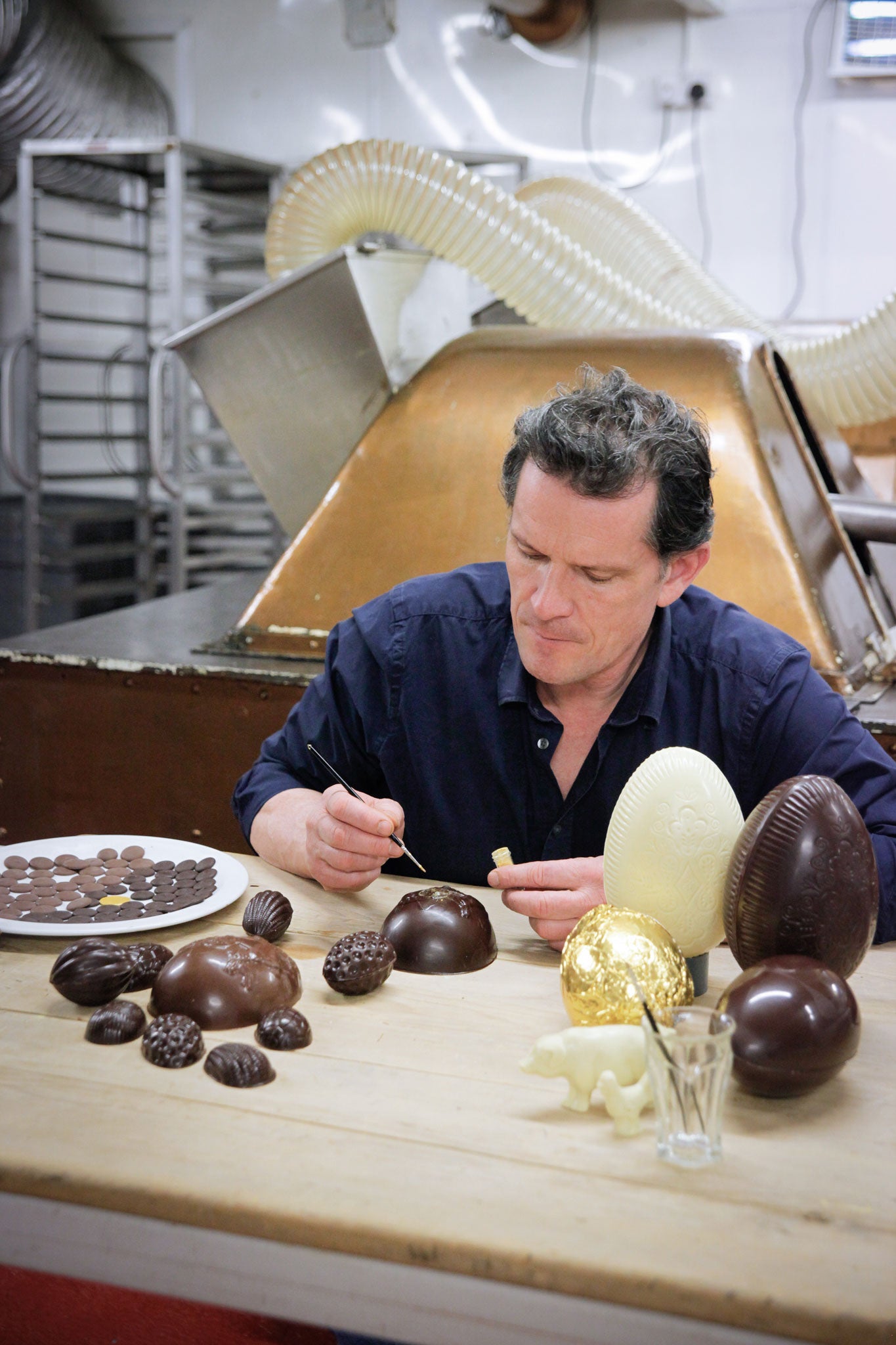
Your support helps us to tell the story
From reproductive rights to climate change to Big Tech, The Independent is on the ground when the story is developing. Whether it's investigating the financials of Elon Musk's pro-Trump PAC or producing our latest documentary, 'The A Word', which shines a light on the American women fighting for reproductive rights, we know how important it is to parse out the facts from the messaging.
At such a critical moment in US history, we need reporters on the ground. Your donation allows us to keep sending journalists to speak to both sides of the story.
The Independent is trusted by Americans across the entire political spectrum. And unlike many other quality news outlets, we choose not to lock Americans out of our reporting and analysis with paywalls. We believe quality journalism should be available to everyone, paid for by those who can afford it.
Your support makes all the difference.When it comes to chocolate bars, Willie Harcourt-Cooze does quite a few things differently. For one thing, his Willie's Cacao chocolate bars aren't bars, they're squares, and they have perky little tasting notes to aid the novice sensation-seeker who has trouble distinguishing her Madagascan from her Peruvian.
My favourite is from Las Trincheras in Venezuela, the country where Harcourt-Cooze fell in love with chocolate in 1993; Las Trincheras is just down the road from the estate, El Tesoro, he bought back then and still owns. The packaging refers to "delectable single-estate cacao" and "smooth, nutty notes" – this last a description that could equally apply to the passionate and voluble chocolatier. When we start talking about Easter, he's quickly off on a tangent about chocolate as a ceremonial drink back in the 14th century, when the Aztecs, the world's first great chocolate lovers, ruled much of Latin America. "Originally it was drunk on those special occasions, but it's completely different now," he says – although not yet as different as he is trying to make it.
Harcourt-Cooze's concern with the quality of his chocolate stretches from the worker on the estate to the square in my hand. He pays over the odds, he says, to encourage his producers to pick and ferment carefully. No foreign substances mar the true expression of the beans in Harcourt-Cooze's chocolate: no soy lecithin, the emulsifier that makes most commercial chocolate smooth – not even any vanilla. "Chocolate has been bastardised so much it can be almost anything now," he says sadly; lots of chocolate, he adds, is mostly sugar.
Harcourt-Cooze is trying to make chocolate that lives up to cacao's species name: theobroma, or food of the gods. At the factory he has built in Devon, he uses antique machines and hand-crafts his chocolate in batches. He is also a little obsessed with the Aztecs, who loved the stuff so much they used cacao beans as money. "Originally [their chocolate] would have had chilli, corn, maybe a bit of vanilla, who knows what else?" He wonders aloud what it was that the Aztec culture revered in cacao. "I suppose I'm trying to emulate that reverence," he says.
His channelling of the Aztecs includes travelling everywhere with little cylinders of cacao powder and chilli oil to make his morning hot chocolate. "Some people find it too much," he admits, but adds, "It's quite exhilarating." He then tells a story of an electrician who was having "the worst day of his life – so I made him a hot chocolate and it changed his whole feeling: it made him happy!"
He has nothing against coffee; he drank it enthusiastically – until, that is, he visited Sierra Leone on a bean-buying trip. "I woke up in Sierra Leone to discover that there's no coffee there," he says. "They grow Robusta beans, but they export all of them, every last one." So he used the cacao he had on him, "and that was it, I suddenly realised what it was all about". Good chocolate is good for you, he maintains, bringing cardiovascular benefits, reducing stress and offering a slow high that's the antithesis of stress-inducing caffeine.
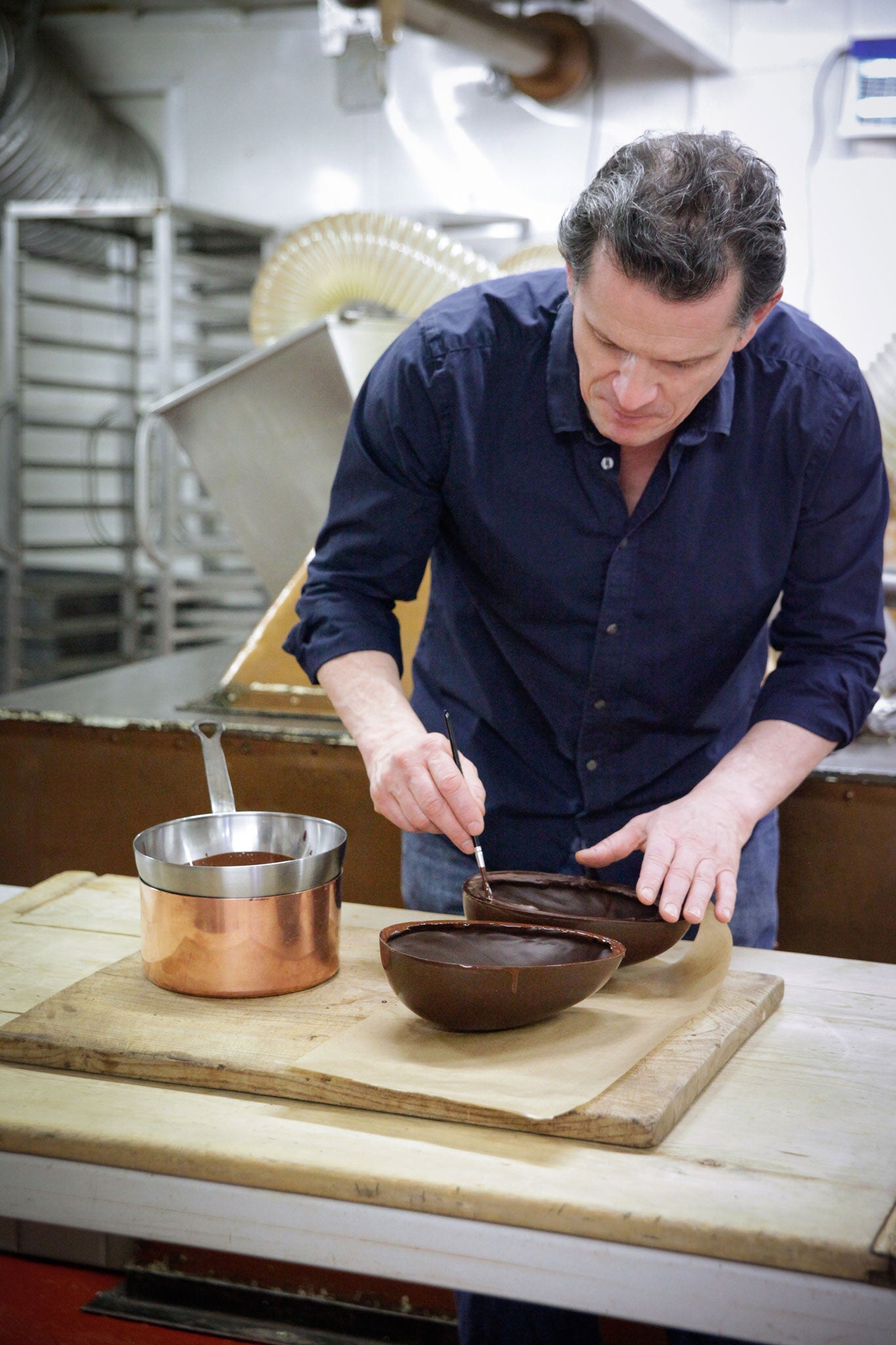
In some ways, Harcourt-Cooze was brought up for slow highs. The child of an Irish mother and Burmese father, he grew up on an island off the south-west coast of Ireland, pickling fruit, smoking fish and milling flour. Then, in his twenties, a backpacking trip to Venezuela – a country with both a long history of cacao-growing as well as rare strains of cacao neglected thanks to the recent influx of oil – changed his life.
Chocolate is still the religion Harcourt-Cooze, now 50, follows, so an Easter egg ought to be the most appropriate of products for him – but he doesn't make them commercially, just for friends and family, who drop round to the workshop and help make their own. "My kids make eggs, my friends make them for their partners – it's a symbolic friendship thing."
Below, he provides a recipe for a special egg he's created for The New Review – one he says "reflects what I'd do for myself". The egg is plain but sprinkled with gold. "If you over-decorate it, you detract from the desire to eat it – the egg becomes a work of art instead," he explains.
It is clear that for Harcourt-Cooze, the chocolatier who wants to convince the whole world to worship lovingly made, high-quality chocolate, there could be nothing worse than an untasted Willie's Cacao Easter egg.
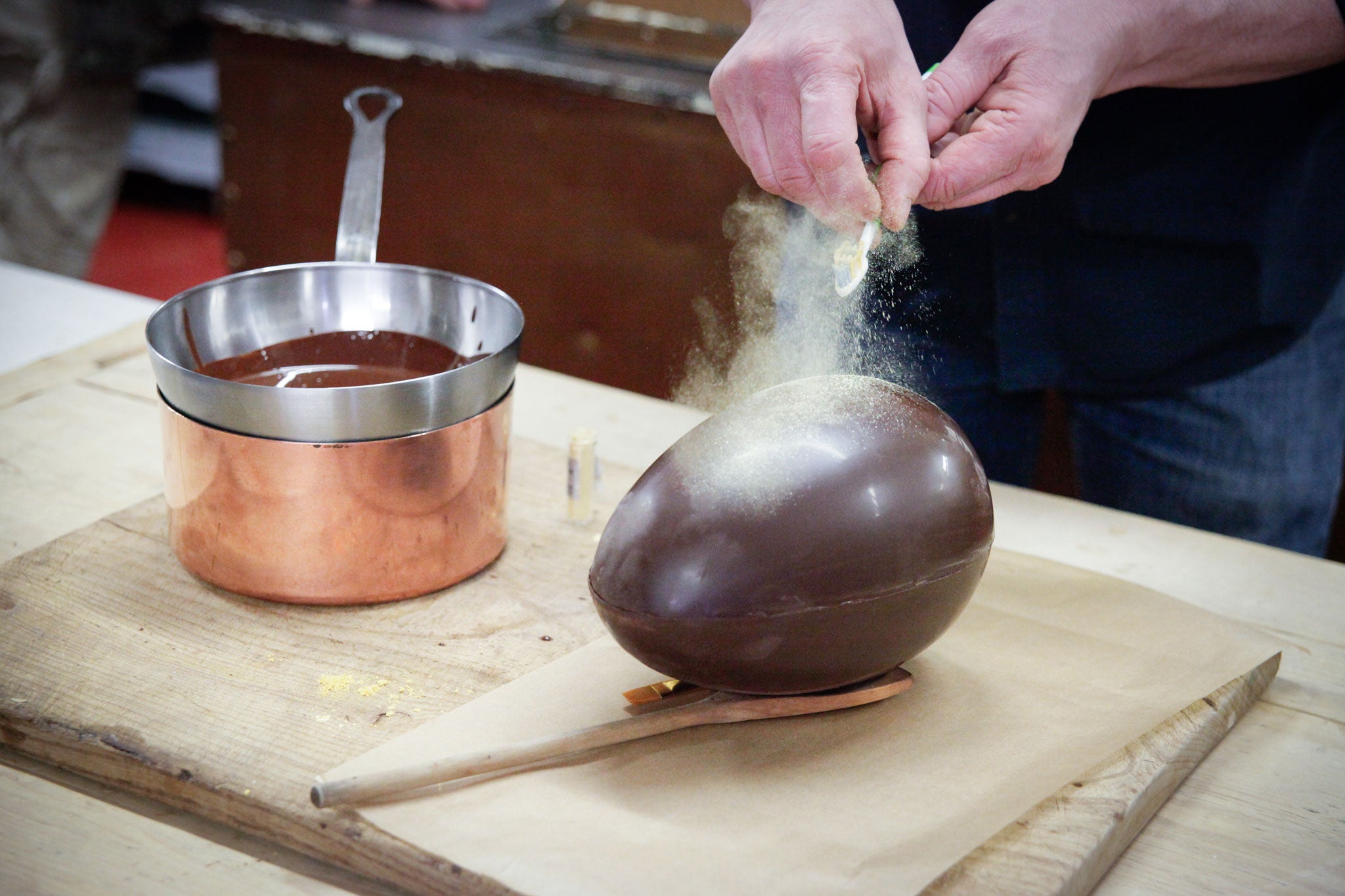
Willie's Easter eggs
To make your eggs gleam, you need to temper the chocolate so the cocoa butter in the chocolate forms tiny crystals. The easiest way to do this is called "seeding" and the smallest amount of chocolate that you can temper in this way is about 300g. If you don't need that much, you can store the remainder in a cool place until needed. You will need a sugar thermometer.
Begin by tempering 300g of chocolate. For this recipe, I've used my Venezuelan Gold, Las Trincheras 72 (this is 72 per cent cacao). Roughly break up or chop 200g and grate the remaining 100g. Place the roughly chopped chocolate in a heatproof bowl set over a pan of gently simmering water until melted, making sure that the bottom of the bowl is not in contact with the hot water. Use the sugar thermometer to check the temperature of the chocolate. When it has reached 45C, remove from the heat and stir in the 100g of grated chocolate.
Keep stirring till the mixture's temperature drops to 28C for dark chocolate – or 26C if you prefer milk or white chocolate.
Set the bowl over the pan of gently simmering water again and heat to 30-32C for dark chocolate (28-29C for milk or white chocolate). The chocolate is now tempered and ready to use.
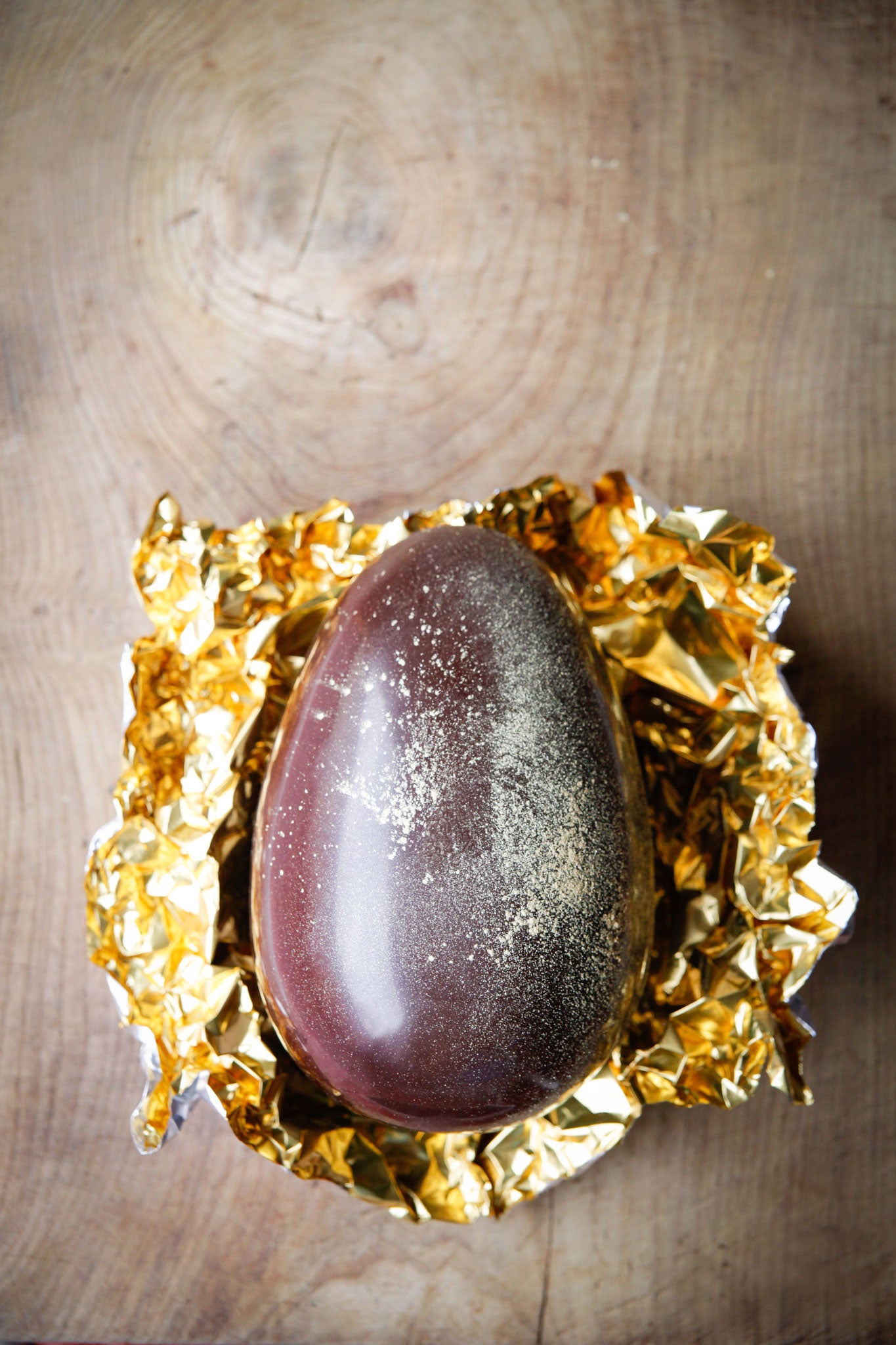
Make sure the inside of your moulds are totally clean and dry. Fill the moulds with chocolate to the top; wait until you can see 5mm set on the outside, then tip out the liquid inner until you have achieved an even thickness on the edge. Move a sharp knife over the flat top of the egg to achieve a nice edge. Place somewhere cool for about an hour (though not the fridge, as if left too long, the egg will crack). When it has finished setting, the egg should fall away from the mould when you give it a gentle tap.
Remove the eggs from their moulds, touching the egg as little as possible. Take one of your egg halves and brush the surface of the flat edge where it will join the other half with a small amount of melted chocolate. Press the two halves together and leave the egg lying flat on its back to set.
To decorate the egg as here, simply flick gold dust on to it with a toothbrush. For other effects, you can mix food-grade coloured powders into melted cocoa butter and start painting. The trick is to make the cocoa butter really hot.
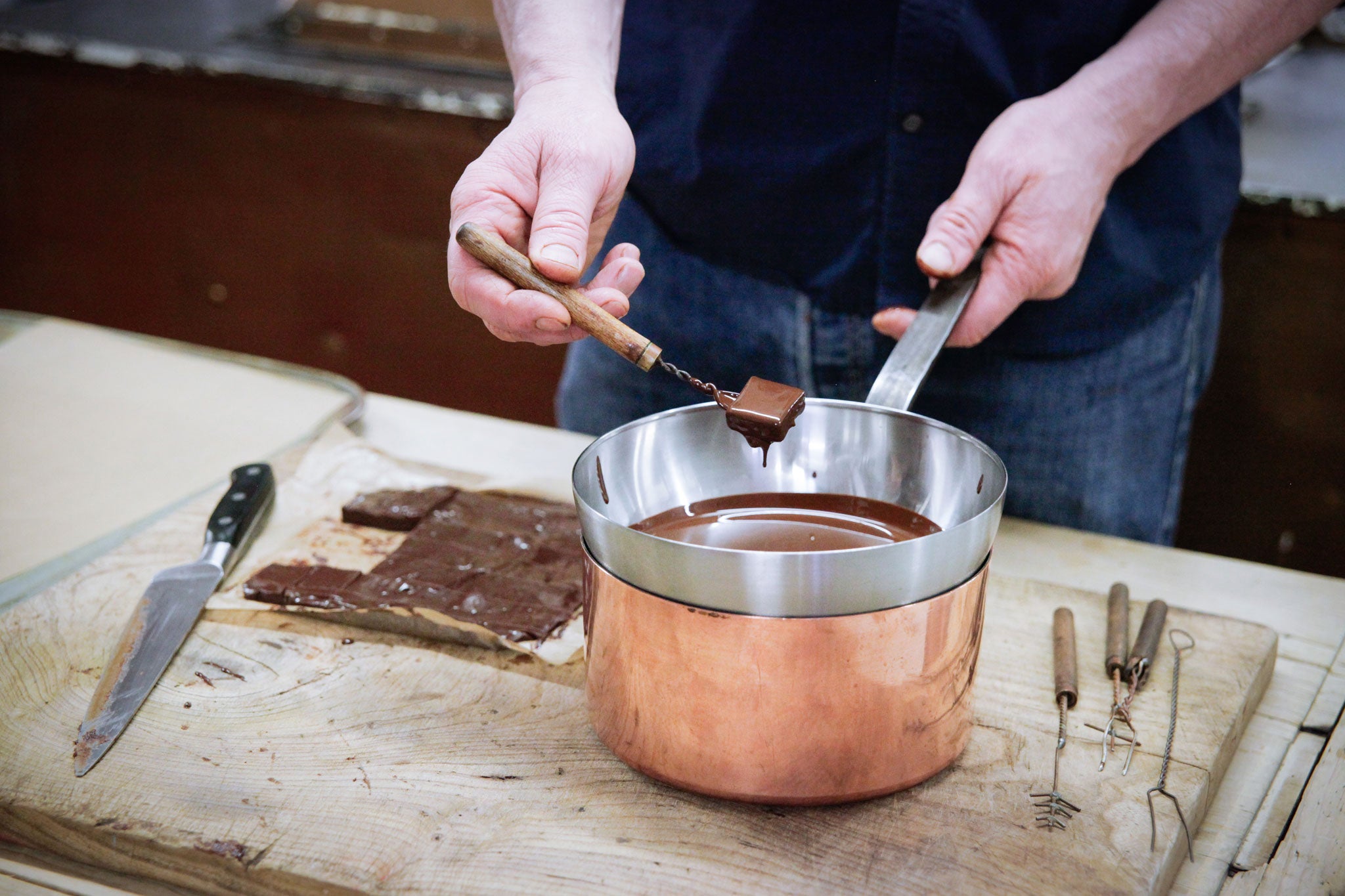
Willie's truffles
When I was searching for cacaos to replant at my farm, I travelled with my cast-iron pot from hacienda to hacienda, making cacao and then truffles to find the flavour notes I was looking for. Truffles are a wonderful way of tasting the multitude of flavours in different types of cacao. (If you want to make this with 70 per cent dark chocolate, use 260g of chocolate and reduce the sugar to 80g.)
Makes 40-45 truffles
250ml double cream
150g raw cane sugar
180g Madagascan Black 100 per cent Sambirano cacao, finely grated
A little tempered chocolate, for dipping (see egg recipe, above)
Prepare a square plastic container with greaseproof paper or cling film that covers the bottom and comes a few cm up the side.
Heat the cream and sugar in a small pan over a low heat, stirring, until just below boiling point. Do not let the mixture boil.
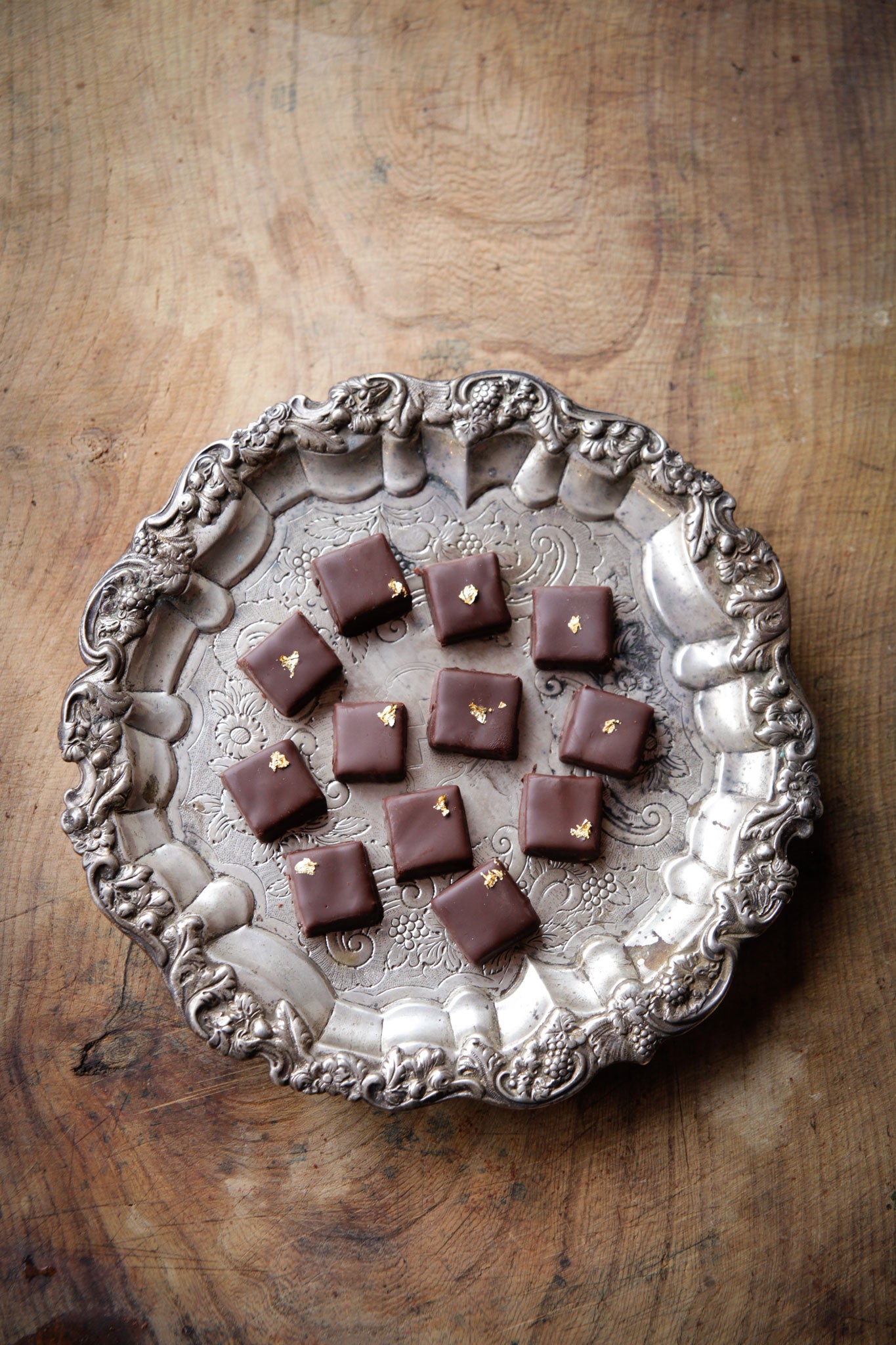
Take off the heat and stir in the cacao until melted. If the mixture becomes too hot and begins to separate, add a tbsp of cold cream and whisk hard until smooth and shiny. Tip the mixture into your container, smooth it out so it is an even 1cm high and place in the fridge for 30 minutes, till firm and totally cold.
Remove from the fridge and take the mixture out of the container in one large slab. Quickly, while the mixture is still cold, cut out your squares and dip them in melted, tempered chocolate. Return briefly to the fridge to set. You could grate over a little white chocolate to decorate. Store in an airtight container.
Join our commenting forum
Join thought-provoking conversations, follow other Independent readers and see their replies
Comments